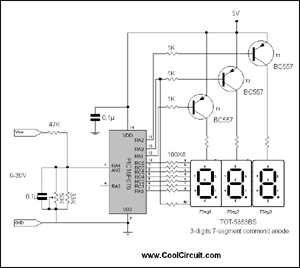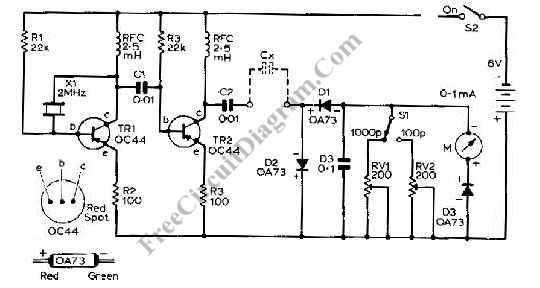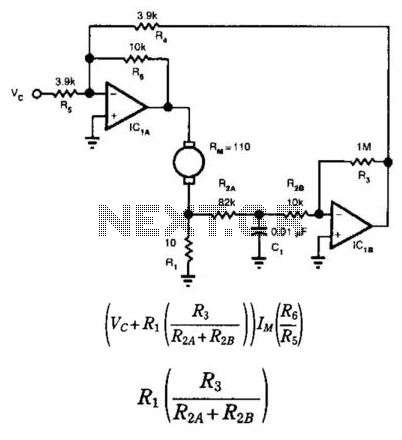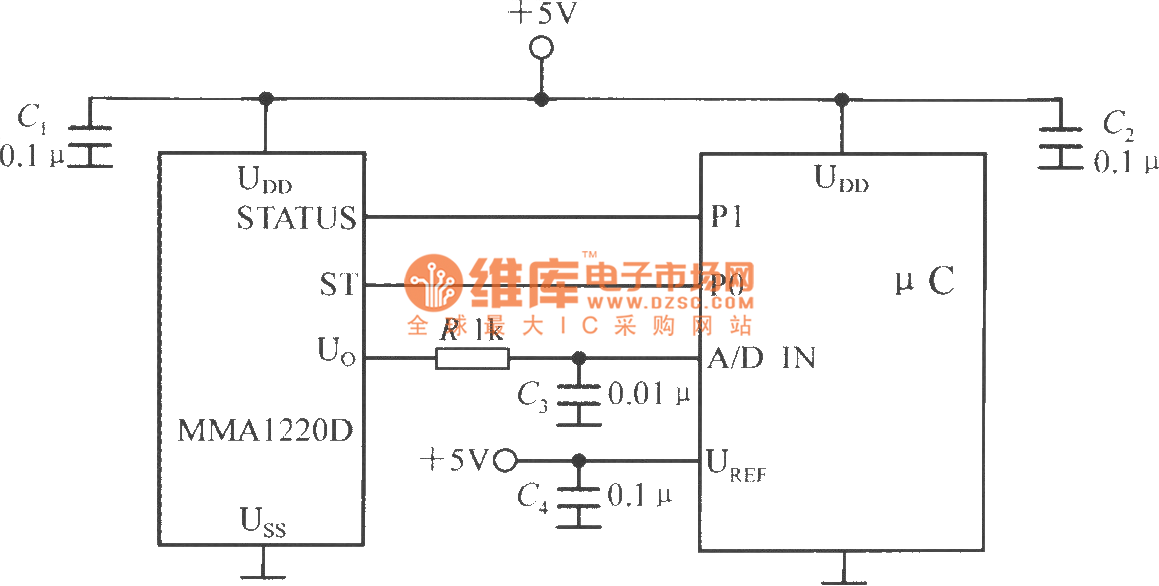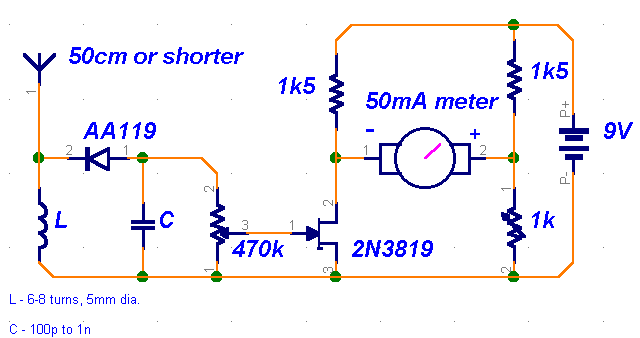
relative field strength meter
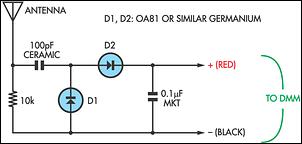
Many passive field strength meters have emerged in the past, typically utilizing a 50mA analog meter movement to achieve reasonable sensitivity. This circuit is similar but has the advantage of functioning with the high-impedance load of a digital multimeter, usually set to the 200mV range. The sensitivity is sufficient for low-power equipment such as CB radios, cordless phones, and model R/C sets (cars, model airplanes, etc.). For optimal performance, it is recommended to use OA81 or comparable germanium diodes. Modern Schottky signal diodes may also be employed, although the results may not be as favorable. The circuit can be housed in a small plastic enclosure with protruding banana posts to correspond with the terminals of the digital multimeter. Additionally, a banana jack can be utilized for the antenna, which can be a simple 500mm length of wire as a starting point.
This circuit design serves as a passive field strength meter, intended for use with low-power communication devices. The key feature of this design is its compatibility with digital multimeters (DMMs), which typically have a high input impedance. This characteristic allows for accurate measurement of low-level RF signals without loading the circuit under test.
The circuit configuration includes a voltage divider and a rectifying stage, where the selected germanium diodes (such as OA81) serve to convert the RF signals into a DC voltage that can be measured by the DMM. The use of germanium diodes is crucial due to their low forward voltage drop and high sensitivity to low-level signals, making them suitable for detecting weak RF fields. While Schottky diodes can also be used, they may not provide the same level of sensitivity and accuracy, particularly in low-power applications.
The enclosure for the circuit should be compact, allowing for easy portability and use in field applications. The banana posts provide a convenient interface for connecting the circuit to the DMM, ensuring a secure and reliable connection. The antenna, which can be a simple length of wire, should be adjustable as needed to optimize reception of the desired RF signals. The recommended length of 500mm serves as a good starting point, but experimentation with different lengths may yield better results depending on the specific application and frequency range of interest.
This passive field strength meter is an effective tool for hobbyists and professionals alike, allowing for the measurement of RF signal strength in various low-power communication devices. Its simplicity and ease of use make it an excellent choice for those looking to assess the performance of their equipment in real-time.Many passive field strength meters have appeared in the past, typically using a 50mA analog meter movement if reasonable sensitivity was to be obtained. This circuit is similar but has the advantage that it works with the high-impedance load of a digital multimeter, typically switched to the 200mV range.
The sensitivity is adequate for low power e quipment like CB radios, cordless phones and model R/C sets (cars, model airplanes, etc). For best results, use OA81 or similar germanium diodes. Modern Schottky signal diodes could also be used but the results are not as good. The circuit can be wired directly into a small plastic box with protruding banana posts to match the terminals on your DMM. A banana jack can also be used for the antenna which could be just a 500mm length of wire as a starting point.
🔗 External reference
This circuit design serves as a passive field strength meter, intended for use with low-power communication devices. The key feature of this design is its compatibility with digital multimeters (DMMs), which typically have a high input impedance. This characteristic allows for accurate measurement of low-level RF signals without loading the circuit under test.
The circuit configuration includes a voltage divider and a rectifying stage, where the selected germanium diodes (such as OA81) serve to convert the RF signals into a DC voltage that can be measured by the DMM. The use of germanium diodes is crucial due to their low forward voltage drop and high sensitivity to low-level signals, making them suitable for detecting weak RF fields. While Schottky diodes can also be used, they may not provide the same level of sensitivity and accuracy, particularly in low-power applications.
The enclosure for the circuit should be compact, allowing for easy portability and use in field applications. The banana posts provide a convenient interface for connecting the circuit to the DMM, ensuring a secure and reliable connection. The antenna, which can be a simple length of wire, should be adjustable as needed to optimize reception of the desired RF signals. The recommended length of 500mm serves as a good starting point, but experimentation with different lengths may yield better results depending on the specific application and frequency range of interest.
This passive field strength meter is an effective tool for hobbyists and professionals alike, allowing for the measurement of RF signal strength in various low-power communication devices. Its simplicity and ease of use make it an excellent choice for those looking to assess the performance of their equipment in real-time.Many passive field strength meters have appeared in the past, typically using a 50mA analog meter movement if reasonable sensitivity was to be obtained. This circuit is similar but has the advantage that it works with the high-impedance load of a digital multimeter, typically switched to the 200mV range.
The sensitivity is adequate for low power e quipment like CB radios, cordless phones and model R/C sets (cars, model airplanes, etc). For best results, use OA81 or similar germanium diodes. Modern Schottky signal diodes could also be used but the results are not as good. The circuit can be wired directly into a small plastic box with protruding banana posts to match the terminals on your DMM. A banana jack can also be used for the antenna which could be just a 500mm length of wire as a starting point.
🔗 External reference
Warning: include(partials/cookie-banner.php): Failed to open stream: Permission denied in /var/www/html/nextgr/view-circuit.php on line 713
Warning: include(): Failed opening 'partials/cookie-banner.php' for inclusion (include_path='.:/usr/share/php') in /var/www/html/nextgr/view-circuit.php on line 713
